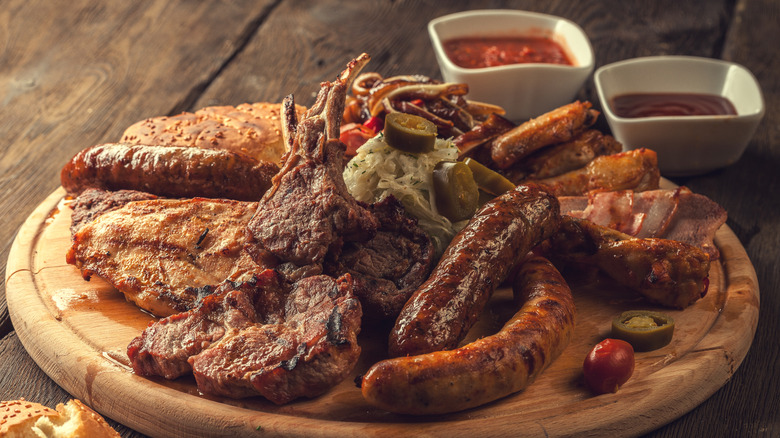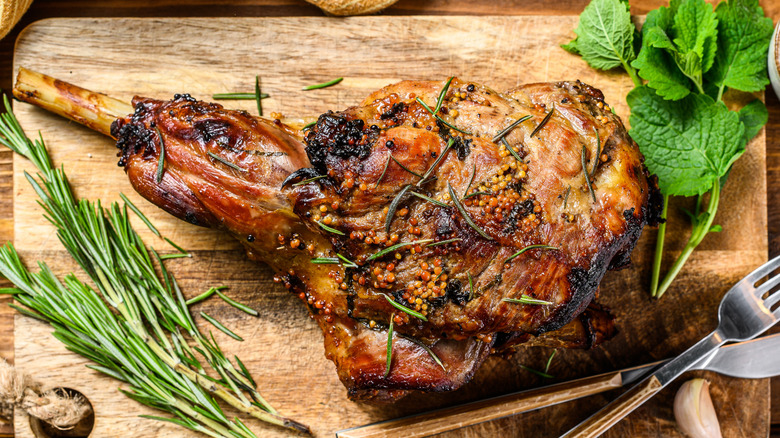This Old-School Meat Used To Be Popular On BBQ Menus
Imagine a mouth-watering barbecue spread, and an assortment of meats comes to mind. You got classics like fall-apart tender barbecue ribs, pulled pork, slow-cooked brisket, smoked sausages, and perhaps some turkey breast. Not often on the menu? Goat. It's one of many old-school barbecue dishes nearly everyone forgot about, but it still deserves love.
Goats were first brought to the American Southwest and Mexico by the Spanish in the 17th century, thus establishing a long-running farming tradition. As a lean protein, the meat shines with low and slow cooking — a perfect match for barbecue techniques. So, by the 19th century, the meat was widely enjoyed, often roasted and sold throughout the Western USA. Yet as slow-cooked beef took hold in Kansas City, and pork dominated the South, the inclusion of goat slipped out of most American barbecue styles. Furthermore, the meat left the American diet altogether — although it's still enjoyed in Mexico and elsewhere globally.
Only in Texas — a hotspot for goat ranching — the protein lives on in barbecue culture, served at annual goat cook-offs and select restaurants. Its consumption grows especially prominent towards the south of the state, where barbecue culture is intertwined with Mexican gastronomy. Here, cabrito (baby goat) goes through a complex preparation of marination, oven-roasting, and then a finish over fire. And in West Texas, you'll also find the protein prepared barbacoa style, slow-cooked in an underground oven. Tracking down such a bite of barbecued goat involves quite the journey — but the effort's worthwhile.
Goat is commonly barbecued in Mexican cuisine
Although now rarely found in the U.S., Mexican preparations still showcase barbecued goat's delicious potential. The protein's popular in several Mexican regional cuisines: Hidalgo, Mexico City, and the Northern state of Monterrey. As across the border in Texas, the two main preparations include the slow-roasting barbacoa as well as the extra-tender cabrito.
Hidalgo-style barbecued goat is prepared in the barbacoa style, involving a dug-out pit, with a small grill separating charcoal and meat. The goat's seasoned, wrapped in maguey leaves (a crucial way to add flavor), and covered with dirt; cooking it takes as long as 12 hours. Extraordinarily tender, the result is traditionally served on blue corn tortillas and topped with a grilled pineapple salsa or charred tomato salsa. Vendors also sell the style on weekends in Mexico City — goat barbacoa is intertwined with celebratory occasions.
Meanwhile, Monterrey's carbrito entails an equally labor-intensive preparation. First, the goat is brined, then optionally seasoned with spices depending on the chef. Then, the cabrito is secured onto a spit and grilled over mesquite for as long as seven hours, with the meat turned every 20 minutes. Once done, the goat is broken down into tacos and accompanied with salsa and fresh vegetable garnishes. Extremely flavorful, it's a showcase of barbecued goat's mouth-watering potential.


